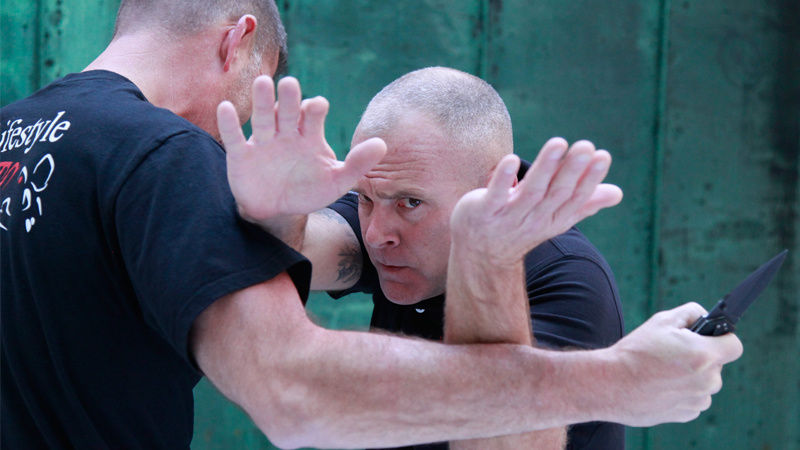Self-Defense Requires More Than a Black Belt: By Kelly Mccann
- Kelly Mccann
- Aug 29, 2024
- 4 min read

WHEN YOU’RE THE ONE who made it, it tastes especially good. You want others to know how good it tastes, so you tell them. But you can’t help yourself, so at the same time you tell them how bad Flavor Aid and Crystal Light taste, comparatively. You become known for making great-tasting Kool-Aid, so much so that your reputation would take a hit if you ever admitted (grudgingly) that Flavor Aid and Crystal Light taste pretty damn good, too. Here is a special article on Self-Defense by Kelly Mccann.
You know there are some things about Kool-Aid that aren’t so good, but it wouldn’t further your cause to highlight them, so you don’t. Instead, you focus exclusively on its great taste, low cost and many uses. (You can even make popsicles with it!) When people point out the drawbacks of drinking it all the time, you get mad. You distract and deflect. You attack the critics — because now you’re invested, and everyone knows it.
YOU CAN PROBABLY GUESS that I’m about to liken this to martial arts. When the bulk of someone’s experience and competence is in one discipline or another, many times the person will vehemently defend “his” art (note the ownership in declaring something “your” art) despite what some may consider glaring faults. In fact, the culture and community demand that.
Grandmasters, masters and black belts tend to be heavily invested in their systems. They demand loyalty and frequently dismiss as disrespectful any intellectual opposition, any challenges to the validity of the techniques and sometimes even innocent questions. Systems need doctrine. Adherents must perform to a standard. The standard is achieved by teaching a consistent curriculum based on the tenets of the system. But when doctrine becomes dogma, there are issues. It’s one thing to say, “This is true in our system” (an opinion), and it’s wholly another matter to say, “This is true universally” (a fact).
THIS IS ESPECIALLY THE CASE when stand-up people impugn ground-fighting practitioners or vice versa. It should be obvious that a need exists for both skill sets, just as it does for a mastery of transitions between the two extremes.
Combatives practitioners also drink their own Kool-Aid when they promote any technique as a panacea. Examples include throat punching, eye gouging and hammerfisting. To challenge just the first one, ask yourself this: If an attacker has any knowledge or experience at all, won’t he keep his chin down? <insert thinking emoji here> No more throat punch!
The often-repeated combatives mantra of “Never go to the ground” is said only by people with no ground game and no understanding of the ground. They mistakenly think it will be their choice in a fight to keep it standing without fully understanding that good wrestlers and jiu-jitsu practitioners will take it to the ground eventually and will look to get it to the ground quickly if they’re getting tuned up by someone with hands.
The madness continues with notions of “Punch his groin if he mounts you.” Ummmm, he’s sitting on his testicles, actually, so whatever you’re punching with that limited- range-of-motion hammerfist isn’t likely to matter much at all.
I often say, “No one does anything because they think it’s stupid.” But what is stupid is thinking that any one system, one technique or one discipline gets it all right. And even when it comes close, there isn’t anything to preclude several things from being effective, is there?
EVEN MORE PUZZLING are the true believers who give credence to so-called “no touch” systems. I’m continually amazed that anybody accepts claims of no-touch knockouts or energy transference. Years ago, people in my combatives organization issued a worldwide challenge in which we agreed to pay $15,000 to anyone who could knock out one of us without making contact. We promoted the challenge and made sure the details got the widest possible distribution: We offered to travel to wherever the no-touch practitioner was and sign any waiver, and we stipulated that we would videotape the whole thing and post the video everywhere. But if the no-touch knockout didn’t occur, the practitioner would have to pay our travel expenses and fork over to us $15,000 for the effort.
Guess how many respondents we got?
We received no emails, texts or phone calls. Yet seminars purporting to teach these techniques fill up regularly. Whole systems revolve around the concept. It defies logic. If such a thing existed, every police force and military organization would embrace it immediately. If such a thing could be taught, people would be getting knocked out globally — for all the right and all the wrong reasons.
Rendering someone unconscious always comes down to kinetics or getting that neck squeeze. You can never, ever take the requirement to fight out of defending yourself against an attack. That means there is great risk to both combatants. Every use-of-force situation is subject to the ungovernable elements of risk and chance.
So earn your black belt — it demonstrates discipline and perseverance. Then burn it so you’re not constrained by it. And whatever you do, don’t drink the Kool-Aid.



